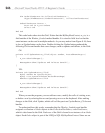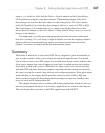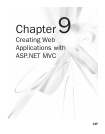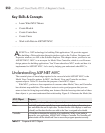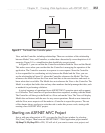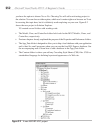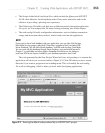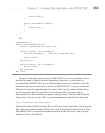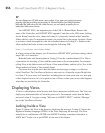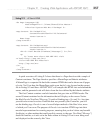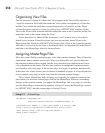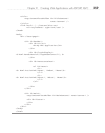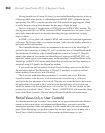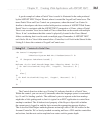
254 Microsoft Visual Studio 2010: A Beginner’s Guide
The skeleton code produced by VS gives you some working examples that you can
build on and move forward. One item that VS doesn’t produce is the Model, which is
discussed next.
Creating the Models
As stated previously, the Model represents the data for the application. The example in
this section uses LINQ to SQL to produce the Model for this application. To create the
Model, add a LINQ to SQL entity Model by right-clicking the Models folder, selecting
Add | New Item, and selecting LINQ to SQL. This creates a *.dbml file that you should
add Customer and Order entities to, using the same techniques described in Chapter 7.
In more sophisticated scenarios, you would have additional objects that held business
logic or other data that isn’t associated with LINQ to SQL. This book keeps tasks at a
basic level so that you can understand how to use VS. You can put Model objects in the
Models folder or a separate class library. This chapter uses the Models folder.
Building Controllers
Requests come directly to a Controller, which we discussed earlier. As shown in Figure 9-2,
the MVC project has a Controllers folder. Controller classes normally reside in the Controllers
folder. Figure 9-2 shows two files, AccountController.cs and HomeController.cs, in the
Controllers folder. Listing 9-1 shows the contents of the HomeController.cs file.
Listing 9-1 The HomeController class
C#:
using System;
using System.Collections.Generic;
using System.Linq;
using System.Web;
using System.Web.Mvc;
namespace MyShopCS.Controllers
{
[HandleError]
public class HomeController : Controller
{
public ActionResult Index()
{
ViewData["Message"] = "Welcome to ASP.NET MVC!";



